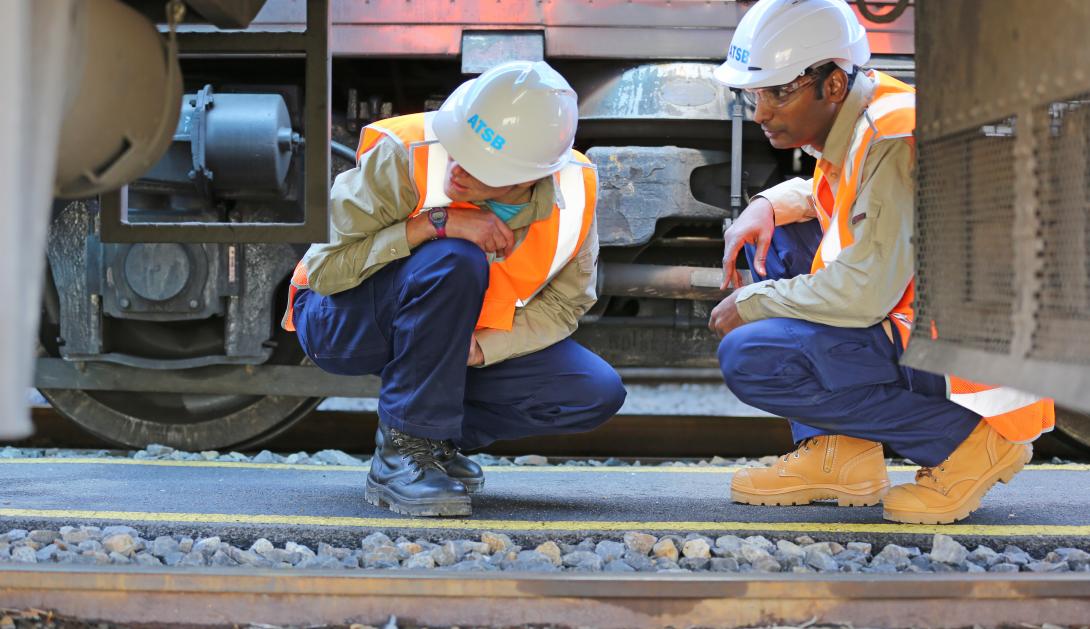
ATSB rail investigations
The ATSB conducts independent ‘no blame’ rail safety investigations in accordance with the Transport Safety Investigation Act 2003 (TSI Act) and does not investigate for the purpose of taking administrative, regulatory or criminal action.
When the ATSB investigates an accident or incident, investigators will seek to determine its circumstances, identify any safety issues and learnings to influence change and improve safety.
The aim of all ATSB investigations is to prevent the occurrence of other accidents and incidents, rather than to assign blame or liability. This approach helps ensure the continued free flow of safety information for the purposes of improving safety in the future.
The ATSB also conducts safety studies and data analysis to identify trends before an occurrence happens.
No occurrence is the same with a range of factors influencing the scope and timing of an investigation. However, the ATSB does not wait until the completion of an investigation to influence safety action. Whenever a critical safety issue is identified, these will immediately be brought to the attention of relevant parties so safety action can be taken.
Who also investigates rail accidents?
In Australia, rail safety investigations are a shared responsibility between national and state-based agencies.
The Office of the National Rail Safety Regulator (ONRSR) investigates significant rail safety incidents to find out if there have been any breaches of the Rail Safety National Law, and whether the processes and procedures required of all parties in the operation of a railway have been properly established, monitored and adhered to.
As a result of an investigation, ONRSR may take regulatory action ranging from the issuing of improvement notices, through to suspending an operator’s accreditation if there is an immediate and serious risk to safety.
ONRSR’s decision to investigate is guided by factors including the severity and scale of potential or actual harm and the seriousness of any potential or actual breach of the law. ONRSR also provides advice and guidance to operators to support compliance with the Rail Safety National Law.
The Office of Transport Safety Investigations (OTSI) in New South Wales and the Office of the Chief Investigator (OCI) in Victoria also conduct no blame transport safety investigations under their own legal frameworks.
Through a Collaboration Agreement, both OTSI and OCI can request to conduct investigations in those states on behalf of the ATSB, which provides greater powers to obtain – and most importantly – protect evidence under the TSI Act.
It is important to note that any evidence gathered under the TSI Act is inadmissible in legal proceedings. This gives those directly involved in an occurrence confidence that any information they provide to investigators cannot be used against them.
Simultaneously and independently, the ATSB – or its OTSI or OCI counterparts – may commence an investigation into an occurrence in parallel with ONRSR. This means you may see and speak with an ATSB, OTSI or OCI investigator working at an accident site in conjunction with ONRSR.
Depending on the circumstances of an incident, state and territory police forces, work health and safety regulators, and coroners may also conduct investigations. In cases where more than one investigation will proceed, all agencies will work together.
Reporting accidents and incidents
As required under the Transport Safety Investigation Regulations 2003 (TSI Regulations), train operating crew, rail and track owners and operators must report accidents and serious incidents (Category A occurrences) that occur as soon as practicable and by the quickest means possible to ONRSR .
Report all Category A occurrences directly to ONRSR by calling 1800 430 888 (24 hrs/ 7 days). Further information on reporting obligations is available on the ONRSR website.
ONRSR then passes this information to the ATSB – who in turn may also pass it on to OTSI or OCI – for review and a decision on whether or not to start a safety investigation.
Does the ATSB investigate all rail accidents?
While the ATSB also has a remit to investigate aviation and marine incidents and accidents, it does not investigate every occurrence. Instead, it selects which occurrences will likely have the greatest public benefit before choosing to launch an investigation - as do many equivalent organisations overseas.
The aim is to concentrate ATSB’s resources on those investigations considered most likely to enhance rail safety. Because many accidents are repetitive in nature, investigating these in any detail may not be justified, given the ATSB’s limited resources. In such cases, the ATSB will not necessarily attend the scene or conduct an in-depth investigation with the production of an extensive report.
The ATSB allocates its investigative resources to be consistent with the following hierarchy of rail operation types:
- mainline operations that impact on passenger services
- freight and other commercial operations
- non-commercial operations
Coronial inquests or inquiries into rail safety occurrences
The relevant state or territory Coroner may hold an inquest into a fatal rail accident. The Coronial inquest and the ATSB investigation are separate but they do interact.
ATSB investigators may be legally required to appear as expert witnesses. A date for an inquest or inquiry is determined by the Coroner.
The Coroner’s Office should be contacted on all matters relating to an inquest. Coronial services can also offer assistance and advice, and some Coronial jurisdictions provide grief counselling and other support for relatives by means of trained professionals.


